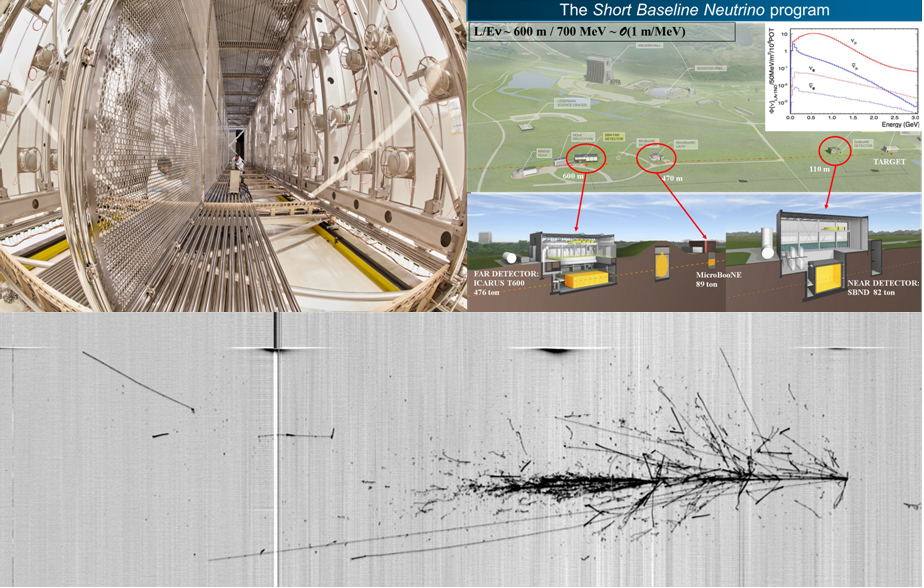Experimental Nuclear and Subnuclear Physics: ICARUS
The group’s activities concern the development of Time Projection Chamber Liquid Argon detectors (LAr-TPC) for rare event physics (neutrino oscillations, nucleon decay, Dark Matter). Part of the group's activities included the development of the WARP double-phase (gas + liquid) LAr-TPC detector to search for Dark Matter in the form of WIMPs (Weakly Interactive Massive Particles). The 100 liter detector worked in the laboratories of Gran Sasso (LNGS) of the INFN for a technical run in which the radioactive backgrounds, which may limit the sensitivity of this type of experiments in which extremely rare events are looked for, have been characterized. The group now mainly participates in the ICARUS-T600 experiment, a 600 tons LAr-TPC of which recorded, from 2010 to 2013, about 3000 interactions of neutrinos from the CNGS beam from CERN to Gran Sasso. Over the years the group has gained expertise and leadership regarding all aspects of ICARUS-T600: realization of the wire chambers that form the heart of the detector; cryogenic plant design necessary to keep the Argon in the liquid phase, stable and clean; realization of the photo-multiplier tube (PMT) system required for the detection of the scintillation light produced by ionizing tracks in liquid Argon, which is used for trigger and timing of events; development of the software for data analysis. The analysis of the CNGS neutrino events produced fundamental physics results published in specialized journals. The group has been recently worked on the transfer of the ICARUS-T600 detector from LNGS to CERN: the detector, updated according to the most recent LAr-TPC technology developments, completely renewed its PMT system for the detection of the scintillation light, its cryogenic system (cryostats and thermal insulation) and the electronics for the TPC wire read-out. ICARUS-T600 will soon arrive at Fermilab (USA) where, within the Short-Baseline Neutrino (SBN) program, will be operated with other two LAr-TPC detectors, SBND and MicroBOONE, with the goal of the search for neutrino oscillations mediated by the presence of a possible new state of neutrino, so-called sterile, for now only suggested by ambiguous results of past experiments. Pavia groups had a leading role in the upgrade of the ICARUS-T600 detector, with the responsibility of the installation of the new PMT system and of the overall technical coordination of the activities at CERN. In parallel, the group carries out research and development to study and characterize new types of photo-detectors (PMT and Silicon PMT) that operate at the LAr cryogenic temperatures and at VUV wavelengths typical of liquefied noble gases. The group’s activities, over the past three years, produced material for three Master Degree Thesis and three PhD Thesis at the Department of Physics.
Staff: Alessandro Menegolli, Claudio Montanari, Andrea Rappoldi, Gian Luca Raselli, Massimo Rossella
ICARUS Experiment at LNGS
ICARUS Experiment at FERMILAB
Short-Baseline Neutrino Program




